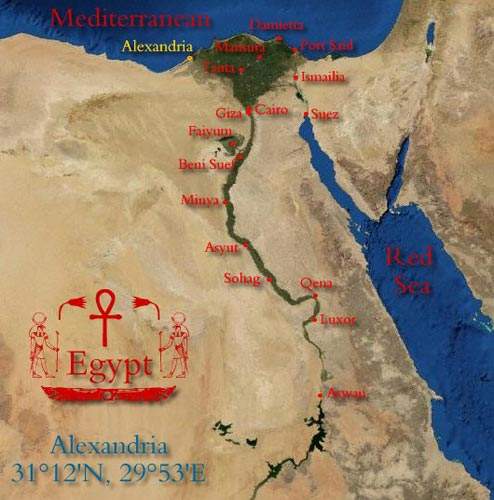Modernisation plans are underway at Borg El Arab Airport in Alexandria, Eygpt, with financial assistance of EGP309m from the Japanese Government. The project, which involved extending the airport’s passenger and cargo terminals, was completed in October 2010.
Following the upgrade, Borg El Arab replaced El Nouzha as Alexandria’s main airport. The $97m contract for the construction of the new facilities was awarded to Orascom Construction Industries and the BESIX Group joint venture. Japan Airport Consultants, Netherlands Airport Consultants and Engineering Consultants Group (Egypt) were the main designers.
Borg El Arab airport
The airport is located 43km from Alexandria, Egypt’s second-largest city. It was inaugurated in 1998 to serve passengers from the Nile Delta and to handle the growing cargo business, which was testing the capacity of the Cairo International Airport.
Over the years, business at El Nouzha began to suffer from deteriorating services, building violations and navigation difficulties. This resulted in the airport losing two of its navigation passages, which in turn disqualified the airport from accepting wide-body aircraft. Cairo’s Imbaba Airport, which was used for aviation training, was also shut down because buildings had been constructed too close to the airfield.
As a result, Cairo International Airport was handling the majority of passenger and cargo volume passing through Egypt; however, relentless vertical and horizontal expansion of the suburbs of Heliopolis Nasr City prompted government action.
In addition, industries such as petrochemicals, metal refining, agriculture and tourism have been expanding around the airport. The number of passengersvisiting Alexandria was projected to increase from 440,000 in 2002 to one million in 2014. The modernisation and expansion of Borg El Arab Airport was taken up in response to these needs.
Modernisation plans
Borg El Arab’s modernisation and expansion plans include the construction of a new passenger terminal with a total floor area of 21,789m2. It is designed to handle a maximum of 4.5 million passengers per year to ensure that it is capable of meeting traffic density for the next decade. By 2014, the terminal is expected to handle an average of one million passengers a year.
The passenger terminal is designed in the shape of a boat. It has three floors: the ground floor for checking in and luggage handling, the second floor for arrivals and airlines offices, and the third floor for departures. In addition, it has a VIP hall. Parking, with a capacity of 350 vehicles is provided at the front of the building.
The terminal has state-of-the-art aeronautical equipment in accordance with standards set by the International Civil Aviation Organisation.
The modernisation plan included building a 2,000m2 cargo terminal building with a capacity to handle 10,000t a year. Air traffic control towers with auxiliary buildings, aircraft parking aprons and taxiways for nine aircraft stands, an aircraft fuel station and an 800m2 rescue and fire station were also part of the project.
Additionally, an access road and car park, a primary power station, a water tank and a sewage treatment plant, administrative and utility structures covering 3,000m2, an apron area, which accommodates 11 different-sized aircraft, and a goods storehouse with a capacity of 5t have also been constructed. All necessary systems and equipment including CCTV, FIDS, CUTE, monitoring and access controls were included in the plans.
Design
The main designer for the modernisation and expansion of Borg El Arab airport was Japan Airport Consultants. The design of the passenger terminal is based on an image of ‘water and sky’. It incorporates elements of Egyptian culture and history, as well as the geographical location of Alexandria. The main feature of this concept is an arc-shaped roof with a curved airside façade.
The façade provides the terminal with a dynamic interior space, a shorter walking distance for passengers and more natural lighting. It also allows the accommodation of more wide-bodied aircraft.
Future expansion is also more practical with this concept as the curved airside façade design can be continued or changed to a straight façade without altering the original image of the passenger terminal building.
Financing the Borg El Arab expansion
The modernisation and expansion plans were undertaken with the assistance provided by the Japanese Government. Japan suspended soft loans to Egypt in 1991, but resumed them in 2002. Since then, loans worth EGP5.25bn have been awarded to Egypt.
For the airport modernisation project, the Japan Bank for International Cooperation provided a soft loan of EGP309m, which has a seven-year grace period and is payable over 25 years at an interest rate of 1.5%.
The loan was used to build and improve the airport’s facilities, as well as for consultation services, which include bidding assistance, detailed design, monitoring and supervision during implementation.
Contractors
Borg El Arab Airport’s modernisation is the second contract awarded to Egyptian Orascom Construction Industries and the BESIX Group joint venture. The initial contract is worth $30m and covers the construction of a new air traffic control tower at Cairo International Airport. The project was completed in 2010.
As passenger movement is expected to increase and reach two million passengers a year by 2024, there are plans to expand the terminal to an area of 34,000m2.
Future expansion
As passenger movement is expected to increase and reach two million passengers a year by 2024, there are plans to expand the terminal to an area of 34,000m2.






